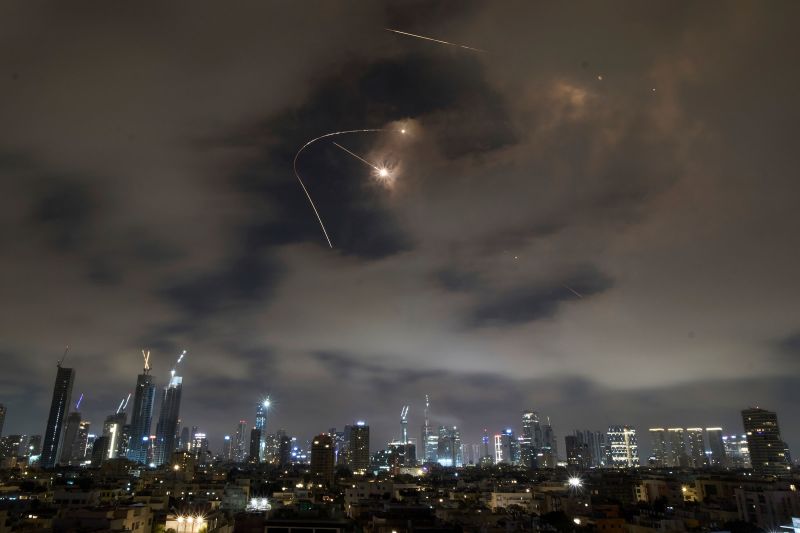
B-2 Stealth Bombers Strike Iranian Nuclear Sites as Trump Declares Bold Military Action
Today marks a defining moment in modern military history and global politics. Over the weekend, the U.S. Air Force deployed its most advanced and elusive aircraft — the B-2 Spirit stealth bomber — to strike three critical nuclear sites inside Iran: Fordow, Natanz, and Isfahan. These strikes, announced by President Donald Trump, represent a significant escalation in the ongoing conflict between Iran and the U.S., as tensions in the Middle East reach a fever pitch.
I want to take a moment to emphasize just how monumental this operation was. The B-2 bomber, capable of penetrating deep into enemy airspace undetected, was the centerpiece of a mission that Trump declared "very successful." According to reports, these bombers dropped full payloads of precision-guided munitions on Iran’s nuclear infrastructure. The Fordow facility, notably built into a mountainside near the city of Qom, was a primary target and reportedly took a heavy hit. These weren’t symbolic strikes—they were strategic and meant to dismantle the core of Iran’s nuclear ambitions.
What’s remarkable is how swiftly and secretly this mission unfolded. Intelligence assets, including satellites and human sources, had been monitoring Iran’s defenses and infrastructure for weeks. Trump, who had been weighing military action, apparently made his decision once diplomatic efforts hit a dead end. In his social media post, he proudly announced that “all planes are safely on their way home,” highlighting both the precision and safety of the operation.
This strike is more than just a show of force—it’s a message. President Trump declared this moment as historic, not just for America, but for the world. Some are calling it a gamble, others a necessity. Lawmakers are deeply divided. Figures like Senator Lindsey Graham praised the action as courageous and justified, while others, like Senator Bernie Sanders, slammed it as unconstitutional and dangerous.
Iran, for its part, claims that these nuclear sites had already been evacuated. But satellite imagery and defense analysis suggest otherwise. Explosions were reportedly heard near Qom, and Iran’s air defense systems were visibly activated in several regions including Tehran and Tabriz.
The question now is: what comes next? Trump has signaled that he’s not planning further strikes—at least for now—and hopes this offensive will drive Iran back to the negotiating table. Still, American forces remain on high alert across the region, anticipating possible retaliation.
This isn’t just a military update—it’s a turning point. The deployment of B-2 stealth bombers to target hardened, underground nuclear sites is a sobering reminder of the capabilities the U.S. holds and the stakes involved in modern warfare. Whether this will push Iran toward peace or further inflame the conflict is something only time will tell. But for now, we are witnessing history in real time, shaped by stealth, speed, and the immense power of precision airpower.
Thanks for the clarification! Yes, you can definitely use RStudio to create and manage a Shiny app, even though the deployment is typically done through the command line using the
rsconnect
package. Here's how you can structure your workflow:
- Trump Confirms US Bombing of Iran's Fordo Nuclear Facility Amid Escalating Tensions
- Palestine Action Ban Plan Sparks National Debate Over Protest and Democracy
1. Develop in RStudio
-
Create your Shiny app in an RStudio project. Your file structure might look like this:
└── other-scripts.R -
Use the RStudio IDE to:
-
Write and test the app locally.
-
Manage version control (Git).
-
Run
rsconnect::deployApp()from the R console pane.
-
2. Deployment (can still be inside RStudio)
If you're not using the GUI "Publish" button and prefer script-based deployment, you can run the following inside RStudio's console or in a script:
This does use command-line-style scripting, but you can keep it entirely within RStudio.
3. Automate or Script Deployment (Optional)
If you want to automate deployment (e.g., from GitHub Actions or a script), the CLI is useful, but for most users working in RStudio, the R console version is fully sufficient and manageable.
Let me know if you want help writing a deployment script or automating the workflow!
Read More:

0 Comments